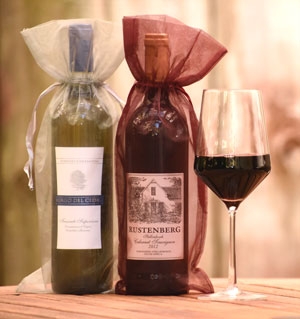Gérard Bertrand is, perhaps, the most respected name in the Languedoc the oldest and largest wine region in France. The Bertrand name is associated with many of the very best domains and vineyards in all of southern France, and like his father before him, Gérard has not only inherited the Bertrand legacy from his forbearers, he has augmented and cultivated the family heritage by acquiring an ever increasing array of outstanding properties each of which produces wines of superlative quality and eminent distinction. The Languedoc remains the world's largest single viticultural area, encompassing many appellations and distinctive sub regions all of which are capable of producing fine wine. Stretching all the way from the Spanish border in the west, within sight of the towering Pyrenees, to the banks of the Rhône River far to the northeast, Languedoc cuts a huge swath of dry coastal plain and sheltered mountains from which flow the guts and the glory of French viticulture. The Languedoc, whose name is synonymous with the language of southern France, was the first part of ancient Gaul to be extensively planted to the vine. And long before the Romans and Caesar's legions had subdued the Gallic tribes to the north, wine was big business in Languedoc. The Phoenicians passed this way, and not surprisingly, the region's beauty and superb conditions for the cultivation of the vine did not escape the first Greek colonists who planted vines there, making Languedoc the cradle of French viticulture in the fifth century BC. For nearly two thousand years, Languedoc remained the big dog and premier purveyor of wine to France and the world. Sadly, the glory of France's most historic wine region the birthplace of troubadours and Provencal, the lyrical language of poetry ended in the 19th century with the advent of phylloxera. Phylloxera, the most dreaded of all vine diseases because it attacks the roots and systematically sucks the life out of a vine, devastated the vineyards of France in the 19th century, targeting Languedoc as its prime host. Following the phylloxera outbreak, the Languedoc lost most of its premier hillside vineyards, old vines and premium varietals. Subsequent replanting was undertaken using inferior grape varietals that would quickly bring high yields and much needed cash. Moreover, the great hillside vineyards descended to the plains, where soil, drainage and exposure (terroir) were inferior to the older, loftier heights of legend and lore. Unfortunately, throughout the late 19th century and most of the 20th century as well, the Languedoc languished in the doldrums of viticulural obscurity, unless of course common, everyday plonk was your beverage of choice. Once the proud bastion of French vitucultral excellence, the Languedoc became the world's major source of huge quantities of insipid wines, whose main virtues were none other than high alcohol and cheap prices all of which were subsidized by the French government. Today, the Languedoc is returning to its former glory. The worldwide demand for cheap, course wine no longer exists; the emphasis today is on quality rather than quantity. In addition, the only official incentive for grape growers is to plant premium varietals, move back to the ancient hillside sites, and produce less wine of greater quality. Since the 1970's that is exactly what has been happening, leading viticulturalists and critics alike to proclaim a veritable Renaissance in the Languedoc, much of it spearheaded by Gérard Bertrand and his father Georges before him. Unlike most of the Languedoc's growers, Georges Bertrand was a visionary. He was also a winemaker and a great wine taster, and he knew the value of premium varietals and excellent terroir. Georges reconstructed his family's estate, Domaine de Villemajou, in the heart of Corbières and began acquiring other prime parcels and ancient estates. In the early1970's, Georges also advised and supported other forward thinking Languedoc growers and winemakers who aspired to greatness. Gérard has continued and fortified that crusade. Since his father's premature death in 1987, Gérard has brought Cigalus, the Languedoc's finest proprietary red and white wines, into the Bertrand fold. He has also acquired the Chateau de l'Hospitalet, an ancient hospice renowned for it wine, whose origins go back to 1561. In addition, Ch_teau Laville-Bertrou, a superlative Minervois estate, and a host of other fine properties from various Languedoc appellations and areas have come under the direction of the Gérard Bertrand. All of Bertrand's estate wines are produced in respect to the environment, using sustainable methods and hand harvesting.



